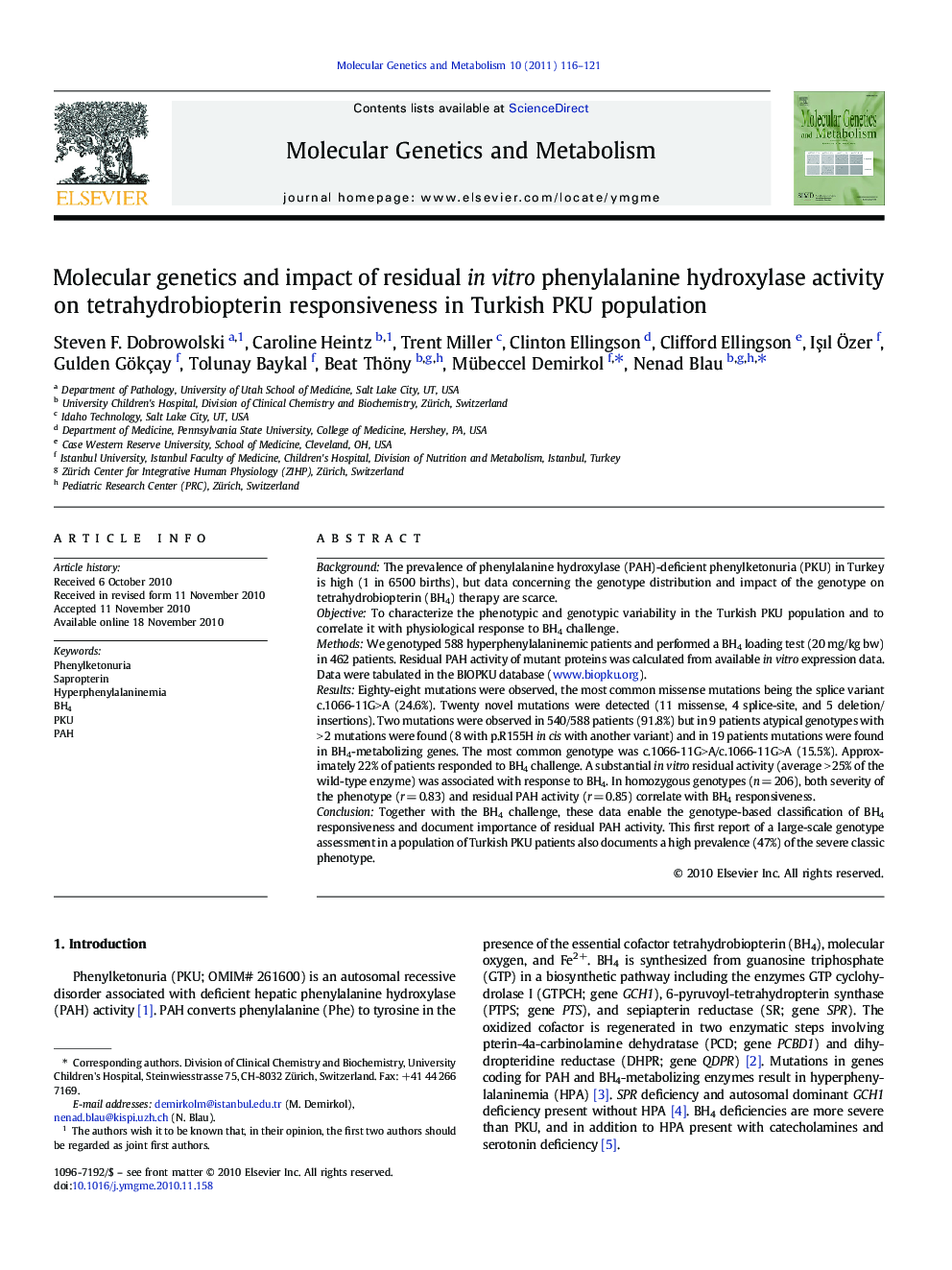| کد مقاله | کد نشریه | سال انتشار | مقاله انگلیسی | نسخه تمام متن |
|---|---|---|---|---|
| 1999215 | 1065846 | 2011 | 6 صفحه PDF | دانلود رایگان |

BackgroundThe prevalence of phenylalanine hydroxylase (PAH)-deficient phenylketonuria (PKU) in Turkey is high (1 in 6500 births), but data concerning the genotype distribution and impact of the genotype on tetrahydrobiopterin (BH4) therapy are scarce.ObjectiveTo characterize the phenotypic and genotypic variability in the Turkish PKU population and to correlate it with physiological response to BH4 challenge.MethodsWe genotyped 588 hyperphenylalaninemic patients and performed a BH4 loading test (20 mg/kg bw) in 462 patients. Residual PAH activity of mutant proteins was calculated from available in vitro expression data. Data were tabulated in the BIOPKU database (www.biopku.org).ResultsEighty-eight mutations were observed, the most common missense mutations being the splice variant c.1066-11G>A (24.6%). Twenty novel mutations were detected (11 missense, 4 splice-site, and 5 deletion/insertions). Two mutations were observed in 540/588 patients (91.8%) but in 9 patients atypical genotypes with > 2 mutations were found (8 with p.R155H in cis with another variant) and in 19 patients mutations were found in BH4-metabolizing genes. The most common genotype was c.1066-11G>A/c.1066-11G>A (15.5%). Approximately 22% of patients responded to BH4 challenge. A substantial in vitro residual activity (average > 25% of the wild-type enzyme) was associated with response to BH4. In homozygous genotypes (n = 206), both severity of the phenotype (r = 0.83) and residual PAH activity (r = 0.85) correlate with BH4 responsiveness.ConclusionTogether with the BH4 challenge, these data enable the genotype-based classification of BH4 responsiveness and document importance of residual PAH activity. This first report of a large-scale genotype assessment in a population of Turkish PKU patients also documents a high prevalence (47%) of the severe classic phenotype.
Journal: Molecular Genetics and Metabolism - Volume 102, Issue 2, February 2011, Pages 116–121